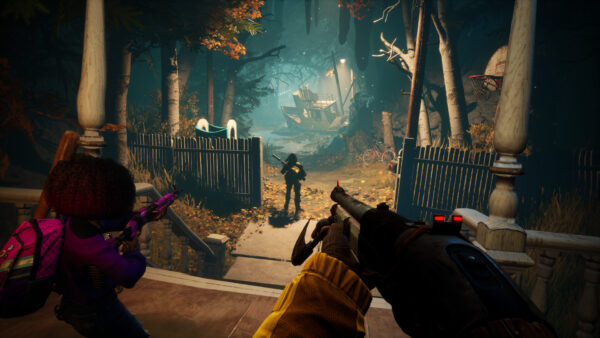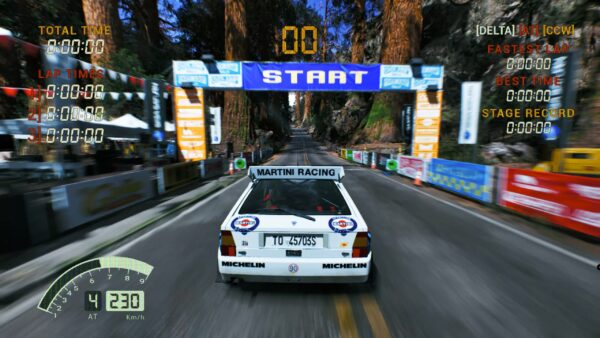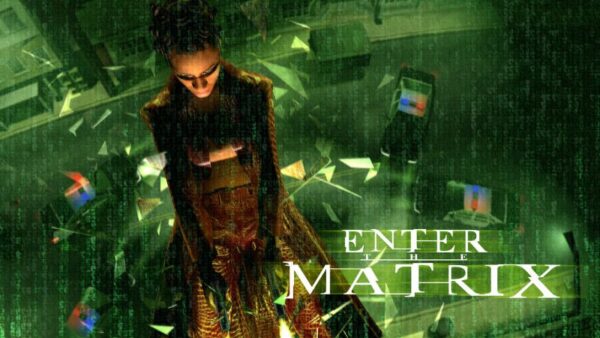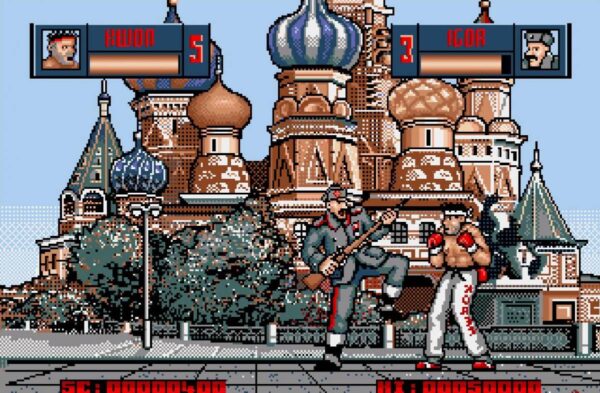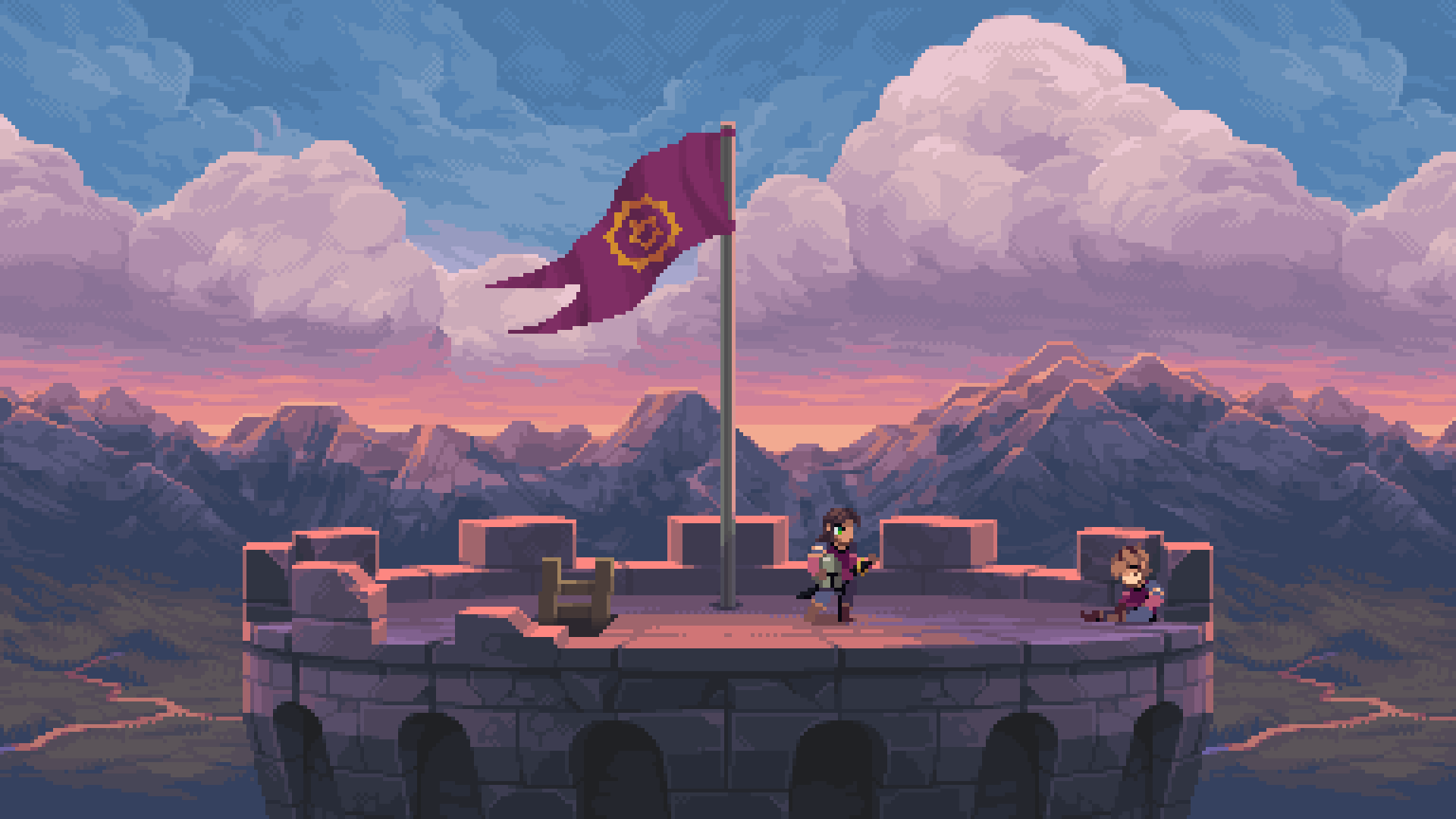
A modern portmanteau derived from inelegantly smashing Metroid and Castlevania’s titles together, the Metroidvania harks back to the mid-nineties, and two seminal action platformers: Nintendo’s Super Metroid and Konami’s Castlevania: Symphony of the Night.
For about a decade, both series continued to serve up non-linear forays into interlocking, unlockable worlds. But after Metroid: Zero Mission in 2004 and Castlevania: Order of Ecclesia in 2008, the series went largely silent – at least, as far as their 2D, exploration-focused outings were concerned.
This absence inspired indie developers to take the Metroidvania into their own hands.
“The genre was wrapped in cherished childhood memories for much of the team,“ says Rodrigue Duperron, marketing and communications specialist at Thunder Lotus, the studio behind 2017’s Sundered. The Metroidvania genre was, Duperron adds, “Ripe for indie reimagining, especially with a key genre franchise – which shall remain nameless – being rather quiet through most of the decade.”
While fans clamoured for new Metroid and Castlevania adventures in vain, indie studios stepped in to fill the void. WayForward Technologies made the Metroid-inspired sequel Shantae: Risky’s Revenge in 2010; DrinkBox released the first Guacamelee! in 2013; and the following year, Tom Happ released Axiom Verge, hailed by Polygon’s Jeremy Parish as the best indie Metroidvania ever made.
Since then, Metroidvanias have come to dominate the indie space. The Mummy Demastered, The Messenger, Iconoclasts, Dandara, SteamWorld Dig 2, Chasm, Yoku’s Island Express, Hollow Knight, Guacamelee! 2, Sundered, Death’s Gambit, Monster Boy and the Cursed Kingdom, and La-Mulana 2 – and many more – have all appeared in the past two years. The genre’s collaborative, as developers bounce ideas off each other, iterating on the community’s suggestions, and taking the genre to bold new places.

WayForward’s Shantae and the Pirate’s Curse freely draws on the Metroidvania genre while establishing its own uniquely light tone.
But how do they do it? How do these indie developers create compelling worlds that are exciting to explore the first time, and still interesting to backtrack through the 100th time? How do they make unlocking new areas and discovering power-ups challenging but not frustrating? To find answers to these questions and more, we spoke to many of the developers making the most compelling games in the sub-genre.
Entering the Unknown
It’s rare to find a game that isn’t at least a little bit like Samus Aran. As she blasts and bombs her way through Thebes, Metroid’s heroine finds new, useful tools hidden in the nooks and crannies of her world. She doubles her jump; she gets a nifty new gun; she somehow, improbably, turns into a ball. By the time she takes down the pterodactyl or angry jellyfish awaiting her at the end of her journey, her toolset is barely recognisable.
The core is there, to be sure, but so much around it has changed. Games are like that. When an indie Metroidvania arrives as a colourful thumbnail on a digital store, it’s often massively different from the hazy concepts that inspired its creation. Central ideas may remain intact, but much of the presentation changes. And, lots of times, central ideas change too.
“We started to work on the Monster Boy game in 2014,” says Fabien Demeulenaere, co-founder of Game Atelier, the Parisian studio behind 2018’s Monster Boy and the Cursed Kingdom. “Back then it wasn’t called Monster Boy. It was called Flying Hamster 2.”

Monster Boy’s distinctive, anime-inspired art style was introduced fairly late in development: just a year and a half before it shipped.
The original Flying Hamster, Game Atelier’s first game, was a little-known platformer released for the PSP in 2010. After they launched a Kickstarter campaign to fund a sequel, the team contacted Ryuichi Nishizawa, who directed the first two titles in the long-running Wonder Boy series, to express thanks for inspiring what was then still called Flying Hamster 2.
To their surprise, Nishizawa misunderstood their message and granted them the Wonder Boy license. He even provided a video endorsement for their Kickstarter. With that, Monster Boy and the Cursed Kingdom was born: still a Metroidvania, as Game Atelier had planned, but now it would be a new entry in a storied series, rather than a new entry in one that few people ever knew existed.
João Brant and Lucas Mattos, the main developers at Brazil’s Long Hat House, experienced a similar shift in design in the early production of 2018’s Dandara. After their first release, the mobile game Magenta Arcade, the duo began work on another touch-based action game.
“It was this arena with ground on top and ground on the bottom; the grounds would move, and if you stayed on them too long you would die,” Brant explains. “You could jump between them and shoot enemies like an arena game.”
The final product retained that movement and combat, but transplanted it into a more substantial Metroidvania. Players still jumped from wall to wall, but now they did so as part of a search for power-ups and experience points. And, instead of using this gravity-defying traversal to move through linear corridors, Dandara’s jump would be used to explore a world that sprawled in every direction.
“We made a string of levels, a string of rooms,” Brant said of the pair’s work during the first few months of pre-production. “Then we started making branching paths. [The shift happened] right in the middle of the prototype, actually.”

Dandara developers Lucas Mattos and João Brant originally met while studying computer science at university in Brazil.
It took considerably longer for BitKid, Inc. to unearth the core of Chasm, a fantasy RPG released in 2018, but which began life back in 2012. According to designer James Petruzzi, the game was conceived as a sci-fi mining game called Solus.
“Your ship crashed on this planet, and you had to mine down and find stuff to repair your ship and eventually escape,” Petruzzi says. “I didn’t really like sci-fi stuff, though, because I was procedurally generating all these tunnels under the ground. And in sci-fi you kind of need projectiles; I don’t think melee works as well. And I was kind of like, ‘It’s so claustrophobic.’”
So, in the final release, sci-fi guns were gone, replaced with swords, axes, and spears. Mining mechanics were eschewed in favour of Symphony of the Night-style exploration and combat. And the spaceship became a sleepy mining town whose residents had disappeared into the monster-infested mines below.
Finding the Fun
Ideas are a dime a dozen; the hard part of making a game is working out whether those ideas stand up under the cold light of scrutiny. For game director Olle Håkansson at Image & Form, that cold light was cast on the original SteamWorld Dig about three months into development.
“The first prototype that we tested on external players didn’t have wall climbing, and it was extremely unforgiving,” Håkansson explains. “If you didn’t consider the way you were digging, you’d make yourself a pit that you couldn’t climb out of.
“We tried many different versions of tutorial levels that worked on ingraining the idea of digging carefully, but there was always a player or two in our tests that missed the cues.
“Finally, we decided to give up on the idea of the meticulously planned mine shafts and just give the player the ability to wall-jump. That was the moment the gameplay suddenly clicked, and from there on we were in production.”

Image & Form’s SteamWorld Dig 2 built on the Metroidvania concepts introduced in the hit 2013 original.
Giving up on preconceived notions of what a game should be is an important step in the process of discovering what a game actually is. This can be especially challenging in a genre as reliant on formula as the Metroidvania. The heirs of Super Metroid and Symphony of the Night are rarely content to inherit the lock-and-key structure that made their ancestors sing. Rather, most of the genre’s descendants opt to include many of the same tools as well. It’s a challenging line to walk.
“All genres are [formulaic], and if they’re not, people complain that they don’t feel like the games [should feel],” says Petruzzi. “With Metroidvanias in particular, if you see a high ledge, it’s like, ‘Oh, I know I’m gonna get a double-jump.’ Or, if you see a little nook you can slide into, it’s like, ‘Okay, I’m going to be getting something for that.’”
In fact, during the development of Dandara, Long Hat House just stopped thinking of the game as a Metroidvania at all.
“We thought about a jump that [would allow you to] jump mid-air, but we just would have needed to make the jump slower so you could aim mid-air. So we didn’t do it,” Brant says, adding that it would’ve been a mistake to include a double jump or similar mechanic simply because “people expect it” of a Metroidvania.
Getting Stuck (and Unstuck)
The feeling of being stuck is part of the Metroidvania’s appeal. The player encounters a locked door, or a high ledge, or a gap in a wall they’re too big to squeeze through. None of the tools currently in their arsenal are any use. They scour the map for leads, but frustratingly, they can’t find any unexplored areas. Then comes the ‘Eureka!’ moment.
The player suddenly remembers an alien statue in an empty chamber they haven’t returned to in hours, or a high wall they can now climb, or an expanse of lava they can now sprint across unscathed.
To deliver such a moment, Metroidvania developers must perform a delicate high-wire routine, avoiding an abyss of frustration on one side and frictionless ease on the other.

Chasm’s gorgeous artwork helped it secure an impressive backing of around $190,000 on Kickstarter in 2013.
“I think everything in games is that sort of balancing act,” says Petruzzi, who, with Chasm, wanted to create a game that was challenging – like the Castlevania games he played in his youth – without pushing players to turn to a strategy guide. “You never want to go too far in any direction,” he continues. “You want to walk this line between accessibility, difficulty, and convenience.”
Used right, late game discoveries can recontextualise everything that came before, as Austin Ivansmith, creative director of The Mummy Demastered, explains.
“Our underwater ability was based on Castlevania: Aria of Sorrow’s ‘Deep Seeker’ soul, and was actually meant to be the first ability the player acquired,” he says. “There were a lot of water puzzles early in the game, but almost none later in the game.
“This was mostly because of a hurried oversight in the layout of the levels, so midway through development, we swapped our underwater ability to be one of the last items we acquire, and it was serendipitous, because it played so much better to backtrack to all the water rooms the player remembered from the first area.
“It just goes to show that even with lots of planning, it’s important to think on your feet and be able to make big shifts to design issues throughout the course of development.”
Outside Eyes
Spotting the moments when big shifts in design are needed often requires a fresh set of eyes. For a programmer who’s spent the past three years making a game, glaring issues may be impossible to spot; playtesters play a crucial role, then, offering nimble fingers and a new perspective.
“[What helps a lot is] seeing the reaction of the player”, says Monster Boy’s Demeulenaere. “Then you understand that, ‘Yeah it’s not going to work,’ or, ‘He knows that this is the right approach,’ and sometimes the ideas that we had didn’t work at all during the playtest. You realise that, really, the best thing to do is to try with people who don’t know anything about your game.

Although The Mummy Demastered’s a licensed game, WayForward were given free rein to make the pixel-art Metroidvania they wanted.
“Playtesting began very early during the development process. Meaning that, for three years in a row, there were people coming almost every day, playing the game, testing it. People coming from the schools that we have in Paris. That really helped, because we can have a very clear view of what you’re doing and all the ideas for what you think are going to work, never working perfectly in the end.”
Heading Out the Door
Of course, the ultimate playtest happens once the game’s released. And given the live nature of modern game development, studios will likely be working on their Metroidvanias for months if not years afterwards, fixing bugs and tweaking any gameplay issues that might have hampered the game at launch.
Since Chasm released last August, the team at BitKid, Inc. have worked to make their Metroidvania more satisfying to play for modern audiences without losing the old-school edge that drew in early fans.

Sundered combined tried-and-true Metroidvania mechanics with unpredictable procedural generation.
“We spent about two months doing major fixes, tightening up combat timing,” Petruzzi says, noting that Chasm’s Castlevania-style combat didn’t click with many PC gamers, while earning solid reviews on PS4. “We didn’t want to break it because we have some people who love it… So, I was trying to find some balance between that, where it doesn’t feel totally stilted but it doesn’t feel like a modern game either, where you can just keep running while you’re attacking.”
Meanwhile, the developers at Sabotage – who released last year’s time-bending ninja action platformer, The Messenger – have moved beyond the fix phase to work on a free patch, Picnic Panic, that will reward players with the amount of new content they would typically associate with a paid expansion.
“The idea with this DLC is that it’s low-stakes, light-hearted; we’re just having a good time,” says Thierry Boulanger, The Messenger’s creative director. “It’s a smooth send-off to that whole story, that character and that world.”
Long Hat House, likewise, is working on DLC for Dandara, though Brant warns that “something horrible could happen and we don’t launch anymore, so no promises.”
That kind of Murphy’s Law approach is a realistic one: when it comes to game design, anything that can go wrong often does. But many of the Metroidvania developers we’ve spoken to have learned to roll with the punches, and to pivot when an idea doesn’t work.
Like expert Metroidvania players, they’ve learned to use every weapon in their arsenal, back-track, and work through their frustration, until those locked doors are finally forced open.


